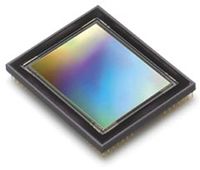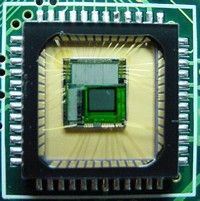CCD and CMOS: Filmless Cameras
Instead of film, a digital camera has a sensor that converts light into electrical charges.
The image sensor employed by most digital cameras is a charge coupled device (CCD). Some cameras use complementary metal oxide semiconductor (CMOS) technology instead. Both CCD and CMOS image sensors convert light into electrons. If you've read How Solar Cells Work, you already understand one of the pieces of technology used to perform the conversion. A simplified way to think about these sensors is to think of a 2-D array of thousands or millions of tiny solar cells.
Advertisement
Once the sensor converts the light into electrons, it reads the value (accumulated charge) of each cell in the image. This is where the differences between the two main sensor types kick in:
- A CCD transports the charge across the chip and reads it at one corner of the array. An analog-to-digital converter (ADC) then turns each pixel's value into a digital value by measuring the amount of charge at each photosite and converting that measurement to binary form.
- CMOS devices use several transistors at each pixel to amplify and move the charge using more traditional wires.
Differences between the two types of sensors lead to a number of pros and cons:

- CCD sensors create high-quality, low-noise images. CMOS sensors are generally more susceptible to noise.
- Because each pixel on a CMOS sensor has several transistors located next to it, the light sensitivity of a CMOS chip is lower. Many of the photons hit the transistors instead of the photodiode.
- CMOS sensors traditionally consume little power. CCDs, on the other hand, use a process that consumes lots of power. CCDs consume as much as 100 times more power than an equivalent CMOS sensor.
- CCD sensors have been mass produced for a longer period of time, so they are more mature. They tend to have higher quality pixels, and more of them.
Although numerous differences exist between the two sensors, they both play the same role in the camera -- they turn light into electricity. For the purpose of understanding how a digital camera works, you can think of them as nearly identical devices.
